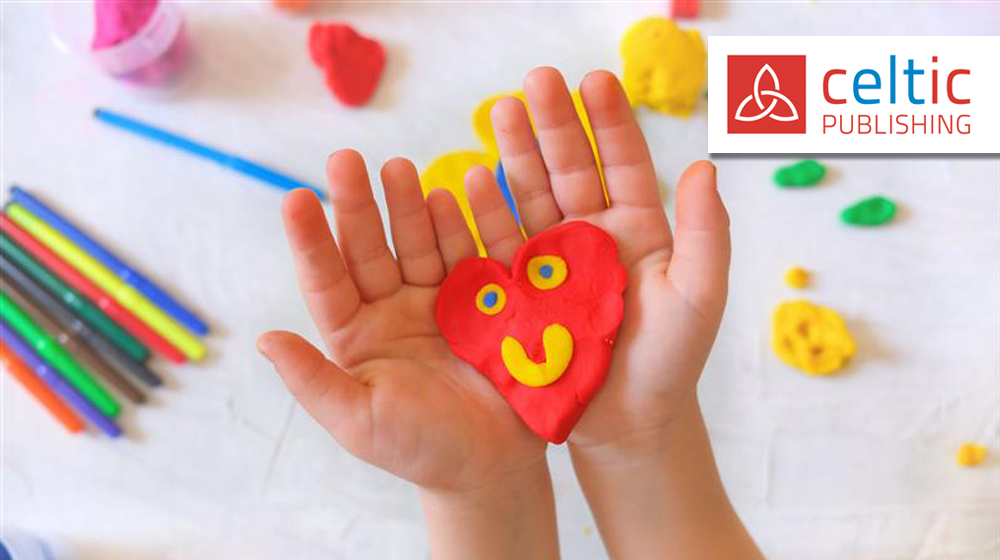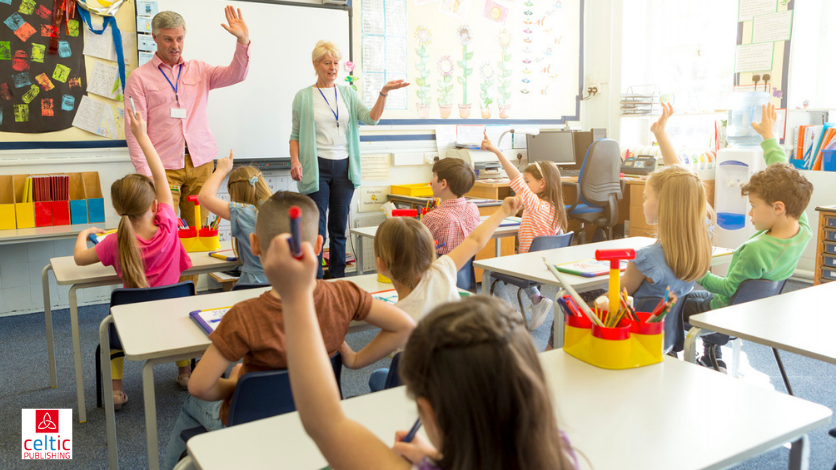Ending the lesson

As a primary school English teacher I teach in 9 classes: some for just one hour, others for two or three hours a week.
I am always very conscious of the importance of handing over a quiet, calm and orderly class to the colleague who follows me. Teaching time is precious and nobody likes to have to spend ten minutes at the start of each lesson reorganising desks and chairs and waiting while the children finish writing homework in their diaries, put their books away and retrieve others from the depths of their school bags.
I always try to keep an eye on the clock and allow time to end the lesson properly.
A vital part of this is saying goodbye to the children which, in true Italian style, can take several minutes with a chorus of “Ciao ciao, bye-bye, ciao maestra, bye teacher, bye-bye teacher, ciaoooo” and much vigorous hand waving.
I actually love this about the Italians, but it is not really conducive to maintaining the right atmosphere at “hand over” time.
A quick chant can solve the problem. Like all new routines it may take a few lessons before they get the hang of it but it’s worth it in the end.
With bags, coat and stereo (if you still have to drag one from class to class) in hand, stand in front of the class, cast a swift look over them all and announce “Good morning and thank you children”. As a chorus they reply “Good morning and thank you teacher / Mrs...”.
And then simply go. No waves, no “byeees”, no “See you soons”.
Your lesson has had a clear ending and your colleague will be delighted to have a class ready for action.
Unless of course he or she then says “Bambini, salutate la maestra.”!
Don’t worry if you and the children are using "good morning" at the end of a lesson as well as at the beginning.
It is a little formal but is still used in many British primary schools today, along with the practice of calling teachers by their title and surname (Mr Smith, Mrs Jones) rather than by their first names.
VERSIONE IN ITALIANO
IL CAMBIO INSEGNANTE
Sono un’insegnante di inglese nella scuola primaria e insegno in ben nove classi: in alcune solo per un'ora a settimana, mentre in altre per due o tre ore a settimana.
Credo sia molto importante lasciare alla collega che viene dopo di me una classe tranquilla, calma e ordinata. Il tempo passato in classe è prezioso e a nessuno piace dover sprecare dieci minuti all'inizio della lezione per sistemare banchi e sedie, aspettare che i bambini finiscano di scrivere sul diario i compiti o che ripongano i libri e recuperino gli altri nei meandri del loro zaino.
Cerco sempre di tenere d'occhio l'orologio e di pianificare la lezione in modo che il tempo sia sufficiente per terminarla rispettando l’orario.
Gioca un ruolo fondamentale il saluto dei bambini alle maestre che può richiedere anche diversi minuti. Al cambio insegnante si alza infatti un coro di "ciao ciao, bye-bye, ciao maestra, bye-bye teacher, ciao ciao insegnante, ciaoooo" accompagnato da energici saluti con le mani.
È molto bello ma potrebbe non aiutare a mantenere l’atmosfera giusta al momento del "cambio insegnante".
Una mini-chant veloce potrebbe essere la soluzione. Come tutte le nuove routine proposte ha bisogno di alcune lezioni prima che i bambini lo riproducano spontaneamente ma alla fine ne vale veramente la pena.
Con la borsa, il cappotto e lo stereo in mano (se ancora devi trasportarlo da una classe all’altra) prima di lasciare la classe, prova a pronunciare il seguente saluto: "Good morning and thank you children!". In coro i bambini dovranno rispondere: “Good morning and thank you teacher / Mrs…!”
E poi lascia la classe così, semplicemente e senza ulteriori "ciao" o "a domani".
La lezione si è chiaramente conclusa e il tuo collega sarà felice di avere la classe subito pronta per la lezione successiva.
A meno che, naturalmente, lui o lei non dica "Bambini, salutate la maestra."!
Si può usare "good morning" sia al termine che all'inizio della lezione.
È una forma di saluto po’ formale ma viene ancora usata in molte scuole primarie britanniche insieme alla consuetudine di chiamare gli insegnanti non per nome ma in base al loro titolo e al cognome (Mr Smith, Mrs Jones).






